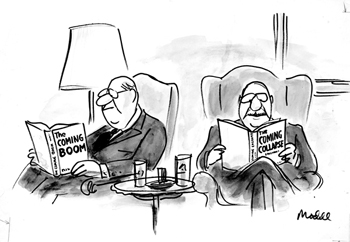Product Description
Tim Liddy Game of Boom or Bust (1951) Presidential Sweepstakes 2006 Oil and enamel on copper, plywood back



TIM LIDDY
“Game of Boom or Bust” (1951) Presidential Sweepstakes 2006
Oil and enamel on copper, plywood back
Signed in script: Tim Liddy “circa 1951” 2006, red circular ring
Provenance: William Shearburn Gallery (St. Louis, MO)
H: 15 1/8” x W: 15 1/8” x D: 2”
With his recent paintings, Liddy has both reasserted the construct of hyperrealist painting and developed a thoroughly unique advancement of that mode by extending the cultural reality of the indexed original. Based on the illustrated box lids of vintage board games, Liddy has recontextualized a subject, which evokes the underlying rules of life. Painted on copper or steel in the precise dimensions of the original, the metal is then manipulated to demonstrate the exact rips and tears from years of usage and includes trompe-l’oeil renditions of the scotch tape that might be holding the cardboard box together, the assorted stains, or the various graffiti of time. Liddy leaves no possibility of ambivalence, these works speak to a concurrent understanding of their original object identity and to themselves as works of art engaged in historical and psychological dialogue.
Tim Liddy Game of Boom or Bust (1951) Presidential Sweepstakes 2006 Oil and enamel on copper, plywood back
DAUM FRÈRES Nancy, France
“Cornflower” vase c. 1897
Blown cobalt blue on a frosted glass ground with heavily wheel carved cornflowers, with an overall martele surface
Signed: Incised Daum Nancy with the Cross of Lorraine France
For more information on Daum Frs. see: Glass: Art Nouveau to Art Deco, Victor Arwas (NY: Abrams, 1987).
H: 4 3/4″
Price: $9,850
